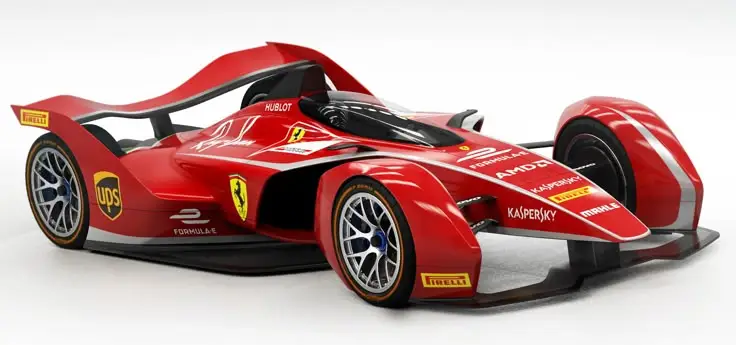Every time you start your car, you’re experiencing the legacy of racing innovation. What begins on the racetrack often finds its way into our everyday vehicles, improving everything from safety features to fuel efficiency. Racing technologies have transformed modern cars by introducing advancements in aerodynamics, materials science, and electronic systems that make our daily drives safer, more efficient, and more enjoyable.

The connection between motorsport and consumer vehicles runs deeper than most people realize. Racing teams use sophisticated data collection systems to monitor everything from tire pressure to engine performance, leading to innovations that eventually reach our driveways. Features we now take for granted—like anti-lock brakes, paddle shifters, and even windscreen wipers and fog lamps—were refined through competitive racing.
As motorsport continues to evolve, so too does its influence on consumer vehicles. Today’s focus on sustainability in racing is driving developments in electric powertrains and hybrid systems that promise to reshape the automotive industry for generations to come.
Key Takeaways
- Racing innovations directly improve consumer vehicle safety, performance, and efficiency through technology transfer from track to street.
- Data-driven development in motorsport has revolutionized how manufacturers design and enhance everyday cars.
- Sustainable technologies pioneered in racing competitions are accelerating the evolution of eco-friendly consumer vehicles.
Historical Evolution of Racing Technologies

Racing has been the birthplace of countless automotive innovations that later became standard in regular cars. The demanding conditions of motorsports have pushed engineers to develop technologies that improve safety, performance, and efficiency.
From Racetrack to Road: A Timeline
In the early 1900s, racing served as the primary testing ground for automotive technology. The first major breakthrough came in the 1950s when disc brakes were adopted in motorsports before appearing in production vehicles. These brakes provided superior stopping power compared to drum brakes.
The 1960s saw aerodynamic designs become a focus in racing, with wind tunnel testing becoming standard practice. This technology eventually transformed everyday vehicle shapes to reduce drag and improve fuel efficiency.
In the 1970s, turbocharging gained prominence in Formula One, later becoming common in consumer vehicles. The 1980s brought electronic fuel injection and engine management systems from the track to the street.
The 1990s and 2000s introduced sophisticated traction control systems and semi-automatic transmissions that are now standard in modern cars. More recently, hybrid technology tested at the Indianapolis Motor Speedway has influenced electric vehicle development.
Key Innovators and Manufacturers
Ferrari stands out as a pioneer in transferring racing technology to production cars. Their work with carbon fiber in Formula One led to its use in high-performance road vehicles, improving both safety and performance through lighter, stronger materials.
Mercedes-Benz has consistently leveraged their racing success to enhance consumer vehicles. Their aerodynamic innovations from motorsports have significantly influenced modern car design.
McLaren revolutionized carbon fiber chassis technology, first in racing and then in road cars. Their expertise made this once exotic material more accessible for production vehicles.
NASCAR innovations have contributed significantly to safety features in everyday cars. Technologies like energy-absorbing barriers have been adapted for highway safety systems.
The Indy Autonomous Challenge represents the newest frontier, developing self-driving technologies that will eventually make their way into consumer vehicles, continuing racing’s role as an incubator for automotive innovation.
Influence on Everyday Vehicle Performance

Racing technologies have transformed our everyday vehicles in significant ways. The intense competition on racetracks pushes innovations that eventually make their way into regular cars, improving how they perform on normal roads.
Aerodynamics and Efficiency
Wind resistance is a major factor that affects how a car performs. Aerodynamic efficiency developed in racing helps everyday vehicles use less fuel and move more smoothly. Many modern cars now feature spoilers and underbody panels first tested on racetracks.
Car manufacturers test these features in wind tunnels, just like racing teams do. This testing helps create shapes that cut through air with less resistance.
Even small details like side mirrors and grille designs have changed because of racing technology. These changes might seem minor, but they add up to make cars more efficient.
The sleek profiles of today’s vehicles come directly from lessons learned on the track. These designs help increase fuel economy while maintaining stability at highway speeds.
Improvements in Tire Technology
Racing teams understand that tires are crucial for performance. The superior traction developed for race cars has led to better grip in everyday vehicles, especially in wet conditions.
Compound materials tested in racing now appear in regular tires. These special rubber blends provide better road contact while lasting longer than previous generations of tires.
Tread patterns developed for various racing conditions have improved how regular cars handle different road surfaces. This technology helps drivers maintain control in challenging weather.
Tire pressure monitoring systems, now standard in many vehicles, came from racing’s need to optimize tire performance. These systems help everyday drivers maintain proper inflation for safety and efficiency.
Advancements in Fuel Efficiency and Hybrid Systems
Racing’s constant push for better performance has led to more efficient engines in everyday cars. Motor racing influence has driven advancements in engine design that extract more power from less fuel.
Direct fuel injection systems, widely used in modern cars, were perfected on racetracks. These systems deliver precisely the right amount of fuel exactly when needed.
Hybrid technology seen in Formula 1 has accelerated the development of hybrid street cars. Energy recovery systems capture and reuse power that would otherwise be wasted during braking.
Lightweight materials tested in racing conditions make everyday vehicles more efficient. Carbon fiber components, once exclusive to racecars, now appear in production vehicles to reduce weight while maintaining strength.
Turbocharging technology refined in racing now helps smaller engines deliver better performance and efficiency in everyday driving conditions.
Safety Innovations Inspired by Racing

Motorsport has revolutionized automotive safety through rigorous testing and innovative solutions developed under extreme conditions. Racing’s focus on protecting drivers at high speeds has transferred numerous life-saving technologies to everyday vehicles.
Materials and Construction
Racing has pioneered advanced materials that make cars safer while maintaining performance. Carbon fiber, initially used in Formula 1 in the 1980s, now appears in passenger vehicle safety cells and crumple zones. This ultra-strong, lightweight material absorbs impact energy more effectively than traditional metals.
Aerodynamic designs initially tested in wind tunnels for racing have improved stability in consumer vehicles, reducing rollovers during emergency maneuvers. Modern manufacturers incorporate racing-derived monocoque structures that distribute crash forces around the passenger compartment rather than through it.
The Indy Autonomous Challenge has accelerated development of AI-guided collision avoidance systems that work with these structural improvements, pushing the boundaries of what’s possible in vehicle safety at all ages and stages of driving experience.
Braking Systems and Handling
Enhanced braking technologies from racing have dramatically improved stopping distances in everyday cars. Disc brakes, now standard equipment, were once exclusive to race cars before becoming universal in passenger vehicles.
Anti-lock braking systems (ABS) were refined on racetracks before becoming mandatory safety features. These systems prevent wheel lockup and maintain steering control during emergency braking with remarkable accuracy.
Electronic stability control, another racing-derived technology, helps prevent skids and loss of control by automatically applying individual brakes when needed. This technology has reduced single-vehicle crashes by up to 40% in some vehicle classes.
Performance tire compounds developed for various racing conditions have improved wet-weather grip and handling for consumer vehicles, significantly reducing accidents during adverse conditions.
Impact on Passive and Active Safety Features
Racing innovations have transformed both passive and active safety systems. HANS (Head And Neck Support) devices, mandatory in professional racing, influenced the development of advanced whiplash protection systems in everyday vehicles.
Multi-point safety harnesses from racing inspired the three-point seatbelts we use today. These restraints distribute crash forces across stronger parts of the body, reducing injury severity.
Active safety features like collision warning systems leverage sensors and computing power originally developed for racing telemetry. These systems monitor surrounding vehicles with increasing accuracy, alerting drivers to potential dangers.
Racing-derived data acquisition systems have evolved into the black box recorders that help manufacturers analyze real-world crashes and continuously improve safety designs across their vehicle lineup.
Advanced Electronics and Telemetry

Modern race cars are rolling laboratories of electronic innovation. The advanced systems developed for high-speed competition have gradually made their way into the vehicles we drive every day, improving safety, efficiency, and performance.
Data Analysis and Performance Monitoring
Real-time telemetry systems revolutionized racing by providing teams with instant performance data. In Formula One, cars transmit hundreds of data points per second, allowing engineers to monitor everything from tire temperature to fuel consumption with incredible accuracy.
This racing technology now appears in consumer vehicles through onboard diagnostics and performance monitors. Many modern cars include systems that track fuel efficiency, tire pressure, and engine health—all derived from motorsport innovation.
Advanced driver assistance systems (ADAS) use sensors similar to those in NASCAR and Formula One cars to monitor surroundings and vehicle performance. These systems help everyday drivers avoid collisions and optimize driving habits.
Predictive analytics, once exclusive to racing teams, now helps consumer vehicles anticipate maintenance needs and prevent breakdowns before they occur.
Communication Systems
The communication technology developed for racing teams has transformed how vehicles interact with drivers and their environment. Race engineers communicate critical information to drivers through sophisticated dashboard displays and audio systems.
These communication innovations now appear in everyday cars through infotainment systems and heads-up displays that provide drivers with crucial information without requiring them to look away from the road.
Vehicle-to-vehicle (V2V) and vehicle-to-infrastructure (V2I) communication systems, refined in motorsport, are beginning to enter consumer vehicles. These technologies allow cars to “talk” to each other and to traffic systems, improving safety and traffic flow.
Data-driven navigation systems help everyday drivers make better decisions, avoid congestion, and improve fuel efficiency—all concepts pioneered in competitive racing environments.
The Rise of Autonomous Technology in Racing

Autonomous racing has emerged as a groundbreaking frontier where artificial intelligence meets motorsport. These driverless race cars are pushing technological boundaries while creating innovations that benefit everyday vehicles.
Developments from the Indy Autonomous Challenge
The Indy Autonomous Challenge represents a landmark achievement in autonomous racing technology. Teams of engineers and programmers create AI systems capable of piloting race cars at speeds reaching 192 MPH without human intervention.
These vehicles use advanced sensor arrays including LiDAR, cameras, and radar to perceive their environment in real-time. The challenge forces teams to solve complex problems like high-speed obstacle avoidance and racing line optimization.
The competition has fostered remarkable innovations in decision-making algorithms that allow cars to make split-second adjustments. Unlike human drivers, these autonomous racers process massive amounts of data simultaneously, creating new possibilities for vehicle control.
Influence on Commercial Autonomous Vehicles
Racing serves as the perfect testing ground for autonomous technologies before they reach consumer vehicles. The extreme conditions of racing push systems to their limits, revealing weaknesses that might not appear in normal driving scenarios.
Many features now appearing in commercial self-driving cars were first tested in autonomous racing, including:
- Advanced collision avoidance systems
- Predictive path planning algorithms
- High-precision GPS and positioning systems
- Real-time decision making under stress conditions
The data-driven strategies refined in racing environments help everyday autonomous vehicles make more informed decisions and navigate complex traffic situations. This racing-to-road pipeline accelerates development timelines for commercial self-driving technology.
Experts predict that autonomous racing will continue to drive innovation toward Level 5 autonomy in production vehicles over the coming decade.
Consumer Market and Popular Culture Connection

Racing technology doesn’t just influence car design; it shapes how we view and value automobiles in society. The symbiotic relationship between motorsports and consumer culture creates powerful marketing opportunities and shifts public perception of automotive brands.
Branding and Car Culture
Car manufacturers leverage their racing success to build powerful brand identities. When a company wins in Formula One, they quickly highlight these achievements in advertisements for their consumer vehicles. This connection helps justify premium pricing and establishes performance credibility.
Racing-inspired limited editions and special models create excitement and demand among consumers. These vehicles allow everyday drivers to feel connected to motorsports, even if they never take their car to a track.
Movies, video games, and other media featuring race cars further strengthen this connection. These pop culture elements help shape how future generations view motorsports and influence purchasing decisions across multiple demographics.
Motorsports and Public Perception
NASCAR and stock car racing have tremendous influence on American car culture, creating loyal fan bases that often translate to brand loyalty when purchasing vehicles. Manufacturers understand this connection and invest heavily in racing teams to build positive associations.
Racing events showcase innovation while demonstrating reliability under extreme conditions. When consumers see race cars surviving punishing conditions, they develop trust in related consumer models.
Environmental concerns have pushed racing organizations to adopt greener technologies, which helps improve public perception of performance vehicles. Formula One’s shift toward hybrid technologies, for example, has helped reshape the image of high-performance cars as potentially more sustainable.
Social media and direct driver engagement have modernized how racing connects with younger audiences, ensuring the continued influence of motorsports on consumer preferences.
Environmental Considerations and Sustainable Development

The racing industry is rapidly evolving to address environmental concerns while developing technologies that benefit everyday vehicles. These innovations are reshaping how manufacturers approach sustainability both on the track and in consumer automobiles.
The Push for Green Technologies
Motorsports has increasingly embraced eco-friendly solutions in recent years. Racing teams and organizations are adopting eco vehicles and sustainable practices to reduce their environmental footprint while maintaining competitive performance.
Formula 1 has been at the forefront of this movement, implementing hybrid power units that have significantly improved fuel efficiency. These technologies transfer directly to consumer vehicles, with manufacturers like Mercedes and Ferrari applying race-developed hybrid systems to their production cars.
The carbon emissions associated with motorsports have prompted innovative solutions such as synthetic fuels and electric racing series. Formula E, the all-electric racing championship, serves as a testing ground for battery technology that manufacturers later implement in consumer electric vehicles.
Eco vehicle racing continues to push boundaries, focusing on improved energy recovery systems and lightweight materials that enhance efficiency. These advancements help manufacturers meet increasingly strict emissions regulations while offering consumers more environmentally friendly options.
Looking Ahead: The Future of Racing and Road Cars

Racing technology continues to drive innovation in everyday vehicles. The next decade will bring major changes to both racing and road cars through electrification, autonomous systems, and advanced data analytics.
Emerging Technologies and Trends
Electric powertrains are rapidly transforming motorsports, with Formula E and other electric racing series leading the way. These competitions serve as testing grounds for battery technology that eventually improves range and performance in consumer electric vehicles.
Autonomous racing is emerging as a surprising new frontier. Series like Roborace feature driverless vehicles competing at high speeds, developing software and sensor systems that will benefit consumer autonomous vehicles.
Sustainability has become central to racing’s future. Many racing organizations now have carbon neutrality goals, pushing innovations in sustainable fuels and materials that manufacturers adopt for production cars.
Data analytics and AI are revolutionizing both sectors. The massive amounts of real-time data collected during races help teams optimize performance, while these same systems are making their way into everyday cars for improved efficiency and safety.
Manufacturers like Toyota, BMW, and Porsche actively use their racing programs as development platforms for future road car technologies, creating a direct pipeline from track to street.
Frequently Asked Questions

Racing technology drives innovation in consumer vehicles through continuous improvements in safety, performance, and efficiency. These advancements often appear in everyday cars after being tested and refined under extreme racing conditions.
What innovations from motorsport have been adapted into production cars?
Numerous racing technologies now appear in everyday vehicles. Disc brakes, which were first widely used in racing, are now standard in passenger cars for their superior stopping power.
Semi-automatic and paddle-shift transmissions originated in Formula 1 before becoming common features in consumer vehicles.
Turbochargers, initially developed to boost racing performance, are now frequently used in everyday cars to improve fuel efficiency while maintaining power.
How has aerodynamics in racing influenced car design in the consumer market?
Aerodynamic principles tested in motorsports directly influence modern car shapes. Streamlined body designs that reduce drag have been adapted from race cars to improve fuel economy in everyday vehicles.
Underbody panels and diffusers, common in racing, now help consumer cars maintain stability at highway speeds.
Many modern spoilers and air dams on production vehicles are refined versions of racing components designed to reduce lift and improve handling.
What safety features in modern vehicles were originally developed for racing?
The crash-absorbing crumple zones in today’s cars evolved from safety cells developed for racing. These structures protect drivers by absorbing impact energy during collisions.
Fire-resistant materials first used in racing suits and cockpits now enhance safety in consumer vehicle interiors.
The three-point seatbelt system gained prominence through racing before becoming standard safety equipment in all passenger vehicles.
In what ways have advancements in racing fuel efficiency impacted everyday car engineering?
Engine management systems refined in racing environments now optimize fuel delivery in consumer vehicles. These systems precisely control combustion for better efficiency without sacrificing performance.
Direct fuel injection technology, perfected in motorsports, has significantly improved fuel economy in modern passenger cars.
Hybrid powertrains tested in endurance racing have influenced the development of more efficient hybrid systems for everyday vehicles.
How do materials used in race car construction trickle down to commercial car manufacturing?
Carbon fiber, initially exclusive to racing due to its high cost, now appears in many high-performance production cars. This lightweight material improves fuel efficiency while maintaining structural integrity.
High-strength aluminum alloys tested in racing conditions are increasingly used in consumer car frames and body panels to reduce weight.
Advanced polymers developed for racing environments have been adapted for use in everyday vehicle components, enhancing durability while reducing weight.
What role has racing played in the development of high-performance braking systems for consumer vehicles?
Carbon ceramic brakes, once exclusive to the racing world, now appear in premium consumer vehicles. These brakes offer superior stopping power and resistance to fade during repeated use.
Anti-lock braking systems (ABS) were refined through racing applications before becoming standard safety features in passenger cars.
Brake-by-wire technology, developed for precise control in racing, has influenced the evolution of electronic braking systems in modern vehicles.



